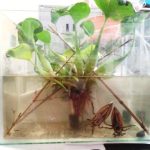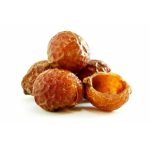Hibiscus calyx (Hibiscus sabdariffa L.) is a shrub native to West Africa, whose fresh or dried calyx has been used to make herbal drinks, fermented beverages, wines and pastries. Anthocyanins, a group of flavonoid derivatives found in relatively high concentrations in hibiscus flowers, contribute to the attractive color of hibiscus flowers with the reported importance of natural antioxidants for health and food applications. Anthocyanins in hibiscus calyx have many beneficial biological roles in human health such as antioxidant capacity, prevention of cardiovascular diseases and asthma. Although anthocyanins are potential alternatives for synthetic colorants, anthocyanins are unstable and prone to degradation due to their special chemical structure. The stability of anthocyanins is greatly influenced by pH, temperature, the presence of light, metal ions, enzymes, oxygen, ascorbic acid, sugars and their degradation products. Due to their low stability during processing and storage, the introduction of these compounds into foods is challenging. Therefore, the aim of this study was to extract and stabilize anthocyanin pigments in hibiscus calyxes and their antioxidant activity for application as colorants in the food industry. The stability of anthocyanins can be improved by using microencapsulation technologies. Microencapsulation is a technique in which one or more biologically active compounds are encapsulated by a matrix of carriers to protect them from the effects of oxygen, water or other environmental conditions and improve their stability. its determination. Microencapsulation is a potential method for the production of natural pigments for application in the food and pharmaceutical industries. In particular, spray drying is one of the most commonly used methods to microencapsulate anthocyanins, helping to protect their biological activities.

Spray drying process








